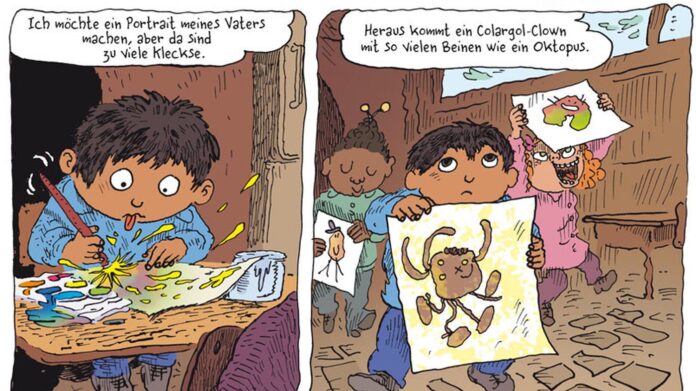Recently, German comic publishers have again published numerous titles worth reading; we present five new releases for young and older readers.
1 Joann Sfar: “The Idolator”
Joann Sfar is not only one of the most popular comic artists in Europe. He is also one of the most productive. In addition to successful titles such as the philosophical series “The Rabbi’s Cat”the fantasy parody “Donjon” and dozens of other bestselling comics, the Frenchman has also published several novels and is celebrated as a director.
The 53-year-old now conveys what drives him in his autobiographical album “The Idolator” (translated from the French by Marcel Le Comte, avant, 208 pp., 30 €) in an entertaining way. It is a declaration of love to art, to life and to his mother. She died when he was three years old, and from then on his father raised him alone, about which he previously wrote in his album, which was released in German last year. “The Synagogue” told.
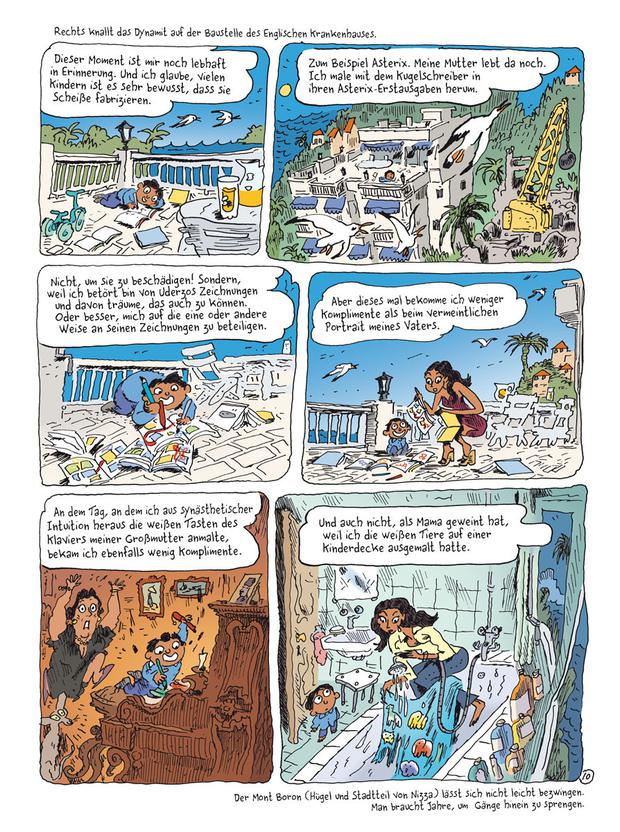
© avant
Creativity became the meaning of young Joann’s life from an early age, probably also to fill the huge gap left by his mother. “Drawing is life,” says Sfar at one point. In scenes that are partly imagined but apparently mostly authentic, he gives insights into his biography and conveys with great humor how enormous creativity and the joy of drawing shaped his life.
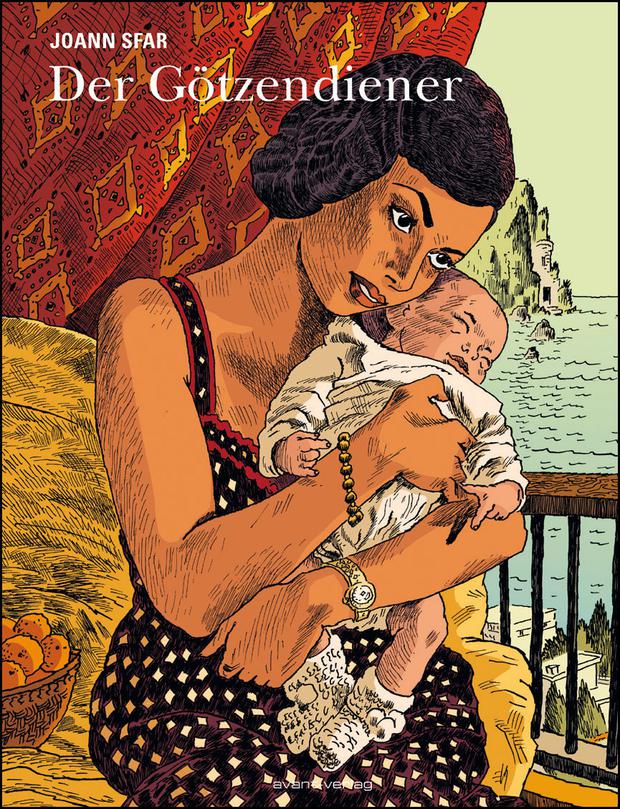
© avant
He cheerfully mixes themes and narrative levels, covering sex and Judaism, psychoanalysis and politics. Sfar is a jumpy narrator, there are many abrupt changes of topic and unfinished thoughts. But his drawings, made in an almost intoxicatingly flowing sketch line, are so masterful and the thoughts he conveys so stimulating that one enjoys following him in his meandering monologue. In addition, there is an almost inexhaustible sense of humor, even when dealing with very serious topics, which makes this book a very entertaining read.
2 Titus Ackermann: “What remains of life”
A pistol and a copy of Hitler’s “Mein Kampf”: These are two of the key items that Titus Ackermann and his family found in 1989 while cleaning up his grandfather’s house after his death. Titus Ackermann was already aware at the time that his grandfather had been a lifelong Nazi. But he didn’t really know his grandfather, even though he spent many summer holidays with him and his grandmother.
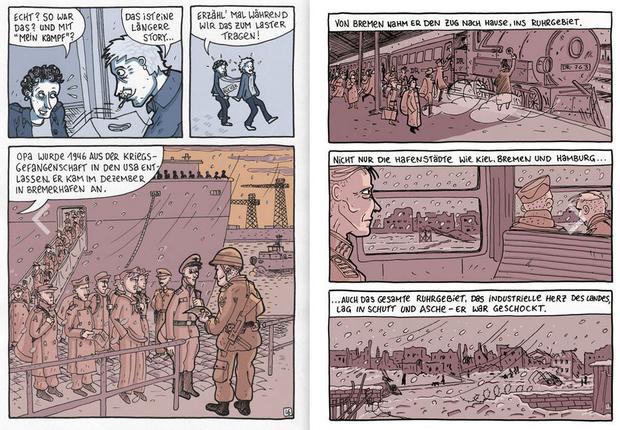
© Moga Mobo
Two decades later, the Berlin comic book author has gone in search of clues. In conversations with his father, his brother and his uncles, dozens of anecdotes came together, from which a clearer picture of his grandfather gradually emerged. Ackermann is now publishing the results of his family research in the four-part series “What remains of life” (64 pages each, free or 10 € when ordered online)published by the artist group Moga Mobowhich the illustrator founded with colleagues 30 years ago.
It is a fascinating approach to a German life story that Ackermann conveys by alternating between different time periods. Little by little, from the family conversations assembled here in the context of a framework story, one can at least guess what drew the son of a poor forester’s family, whose father was once shot by poachers, to the National Socialists in the 1930s. And how he remained true to his convictions after the Allied victory, but maintained a bourgeois facade to the outside world and rose to become a successful businessman in the economic miracle of the Federal Republic, conveys a central chapter of German post-war history in an exemplary manner.

© Moga Mobo
Ackermann’s drawings are semi-realistic, with clear contour lines and flat colors that clearly distinguish the different time periods: blue for the present in 1989, brown for anecdotes from the grandfather’s life as an adult, and there are also a few sketchy scenes from the grandfather’s youth. This is a clear introduction to a complex biography, and after reading the first two volumes, the reader is eagerly awaiting the sequel.
The individual volumes of “What Remains of Life” are available free of charge in selected comic shops, in the online shop of Moga Mobo They can be ordered for ten euros each.
3 Blutch: “Lucky Luke – The Untamed”
Had a heart for those in need LuckyLuke yes, always. In the current album of the popular western satire, the lanky cowboy also proves himself to be a sensitive social worker. In “The Untamed” (Egmont, 48 pages, 8.99 softcover / 16 € hardcover) He takes care of two neglected children. Their parents are involved in criminal activities and have a score to settle with a gang of gangsters, which provides the framework for a turbulent adventure.
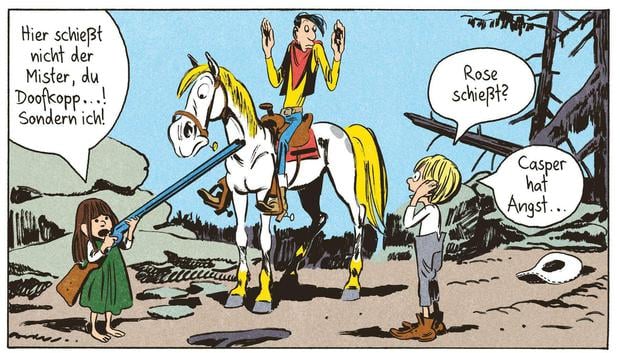
© Egmont Ehapa
However, this is told here with a special style and a humor that is a little more offbeat than what we are used to from the series. The album is not a regular volume in the series, but the sixth part of the homage series, in which artists convey their own view of Lucky Luke and his universe.
In this case, that is the Frenchman Christian Hincker, better known by his stage name Blutch. He has made a name for himself in France as a versatile author who can tell sensitive autobiographical stories just as well as experimental comics or fantasy adventures from the “Donjon” series. However, only a few of his works have been published in this country so far.
In “The Untamed” he deals with big themes such as neglect, poverty and social conventions with apparent ease and delivers wonderful jabs at bourgeois hypocrisy. His drawing style is a touch more realistic and sketchy than one is used to from the series, which was once founded by the Belgian Morris and has been continued in the classic style by the Frenchman Achdé since his death in 2001.

© Egmont Ehapa
Blutch gives Lucky Luke and the supporting characters around him a little more anarchic wit and more character. However, unlike other homage authors such as the Frenchman Matthieu Bonhomme or the German illustrators Ralf König and Mawil, he largely sticks to the established conventions of the Lucky Luke universe. This volume should therefore appeal to fans of the classic series as well as people who want a little more fresh air in the series that has now been running for 78 years.
4 Aisha Franz: “Three from the Future”
Remote-controlled clouds, flying children and robots that use human boogers as fuel. The world in 2065 is exciting and a little crazy. At least if it turns out the way the Berlin illustrator Aisha Franz (“Work-Life-Balance”) describes it in her children’s comic “Three from the Future” (Reproduction, 80 pages, €15, reading age 6+) Three children are the main characters and experience all sorts of escapades in a retro-futuristic world.
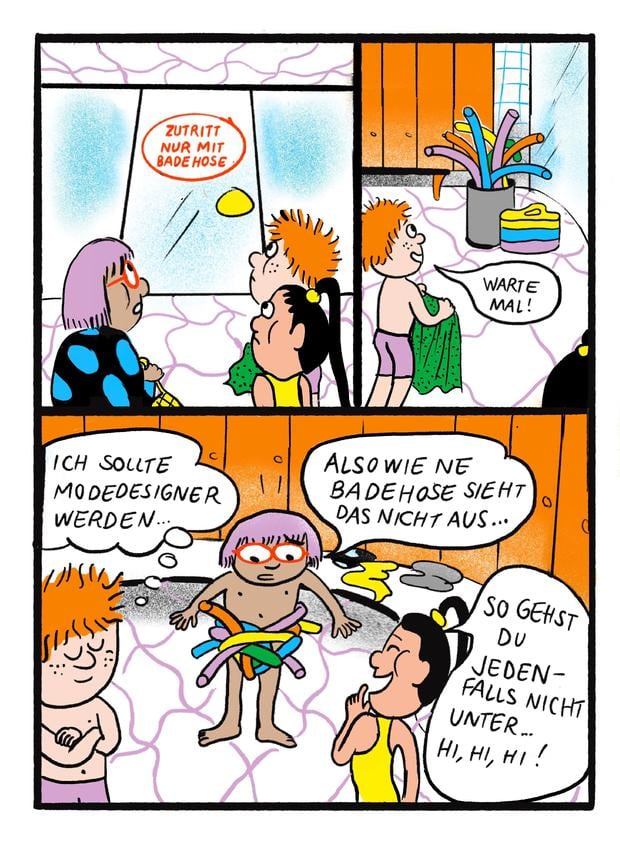
© Reproduct
Since 2019, the award-winning comic book author has been publishing her short stories on “Zeit Leo”, the children’s pages of “Zeit”, and an anthology has now been published by Berlin-based Reprodukt-Verlag. The future designed by Franz is an adventure playground decorated in pop pastel colors, where things sometimes get upside down. But at the end of the short stories, which are held together by a framework plot, there is usually a happy ending.

© reproduct
The illustrator draws her characters with rounded, sparingly used lines and expressive faces; the flexible panel layout contributes to the dynamic overall picture. There are many witty references to the present, subtle cultural-critical comments and, above all, many amusing scenes from everyday school and family life in which the young target audience will probably recognize themselves. This Sunday, Franz will read from her book at the Children’s Comic Day in Berlin (2 p.m., Kastanienallee 79, Prenzlauer Berg).
5 Schwarwel: “Godfather”
A middle-aged man stands on a railway platform and appears desperate. “I can’t take it anymore,” he sighs. Then he steps to the edge of the platform – but instead of hurting himself, he picks up the phone and calls a friend who can get him help.
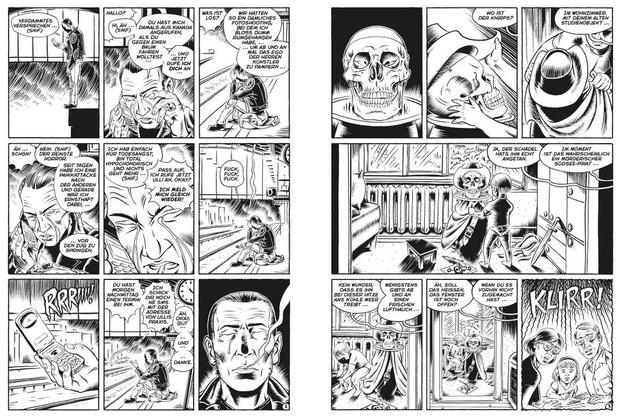
© Happy Monday
For five years, Leipzig comic artist Thomas Meitsch, alias Blackwel in his series “Godfather” dealing with existential questions, now the autobiographical narrative has been published as an anthology (Happy Monday, 172 pages, 19.90 €)Death is a constant companion of the main character Timmy. Through his parents, who are both doctors, he gains early insights into the transience of the human body. Several acts of violence and deaths in his environment affect him deeply, and he develops a morbid view of the world at an early age.

© Happy Monday
In high-contrast black-and-white images, Schwarwel shows how Timmy, plagued by anxiety, becomes a man who puts on a hard exterior as a rebellious punk, but who suffers from depression and panic attacks on the inside.
With his signature in the tradition of Charles BurnsWith hatching reminiscent of classic woodcuts and a strict panel grid, the artist gives his story a controlled-looking framework. However, the story he tells is characterized by the opposite dynamic: it is about despair, inner conflict and suicidal thoughts. By alternating between different time levels, Schwarwel also provides deep insights into a GDR youth caught between adaptation and rebellion.
The publication was sponsored by the Funus Foundation, whose goal is an open confrontation with death. Schwarwel conveys the topic in such a way that it will have a lasting impact. And he shows that even in seemingly hopeless situations there is often a path back to life.
